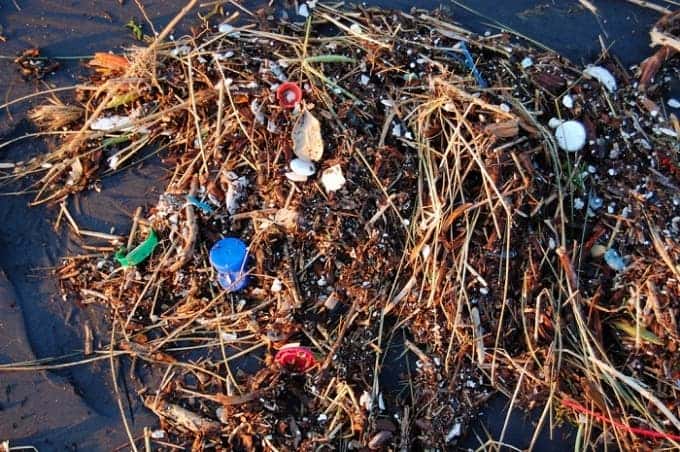
In the 1980s a report described how a ginormous patch of plastic trash was guided by currents and concentrated right in the middle of the Pacific Ocean in an area that some estimated as being roughly two times the size of Texas. Naturally, people all over the world were outraged, but I guess it didn’t last too long, nor did it matter too much. Since then, plastic production and subsequent dumping has increased several times, and more and more previously pristine environments have now become polluted with plastic litter. Many of the Great Lakes for instance, home to some of the most amazing freshwater ecosystems in the world, have recently been reported as being actually more infested with plastic than the “Great Pacific Garbage Patch”.
In the past 30 years or roughly since the Great Pacific Garbage Patch was first reported, plastic production worldwide has increased by a whooping 500% in an attempt to satisfy demand, which is still on the rise. Cheap and durable, plastic is possibly the most successful material of the past century. It’s so reliable that it needs hundreds of years to decompose, time in which it pollutes the ground and hurts animals who mistake it for a food source.
Waters are no strangers to plastic either, as presented earlier and a recent study looking to assess just how polluted the Great Lakes – the largest groups of fresh water lakes in the world – are with plastics. Their findings, presented recently at the Great Lakes meeting of the American Chemical Society, were nothing less of startling.
If you live near the Great Lakes and haven’t noticed the massive plastic pollution that’s going on there, know that you aren’t alone. This is because the bulk of the plastics debris found in the lakes aren’t made out of voluminous items like bottles, bags and other trash – it’s made out of tiny pieces and particles of plastic, unnoticeable at a glance, but taken as a whole they represent a massive ecological disaster. Because 85 percent of the particles are smaller than two-tenths of an inch, though, it’s difficult to properly clean up the waters too.
“People became aware of plastics in the oceans and waters in the ‘60s and ‘70s, and the great Pacific garbage patch. But from far away, bits of plastic look just like the water. So it’s not so noticeable or recognized in the greater topic of plastics in the environment.”
Typically, the plastic debris form a thin film right below the surface of the water that is often mistaken by fish, birds and other wildlife in the area for food. Harmful substances that make up the plastic also pose a significant hazard to the aquatic ecosystem as they get absorbed into the water itself. To get an idea, check this Wired article which documents how albatross chicks were found stuffed with plastic trash instead of food, as they were fed by their mother which couldn’t tell the difference – ADVISED: not for the faint of heart! Also, when you consider the cycle – human trash –> animals eat it –> humans eat animals – it kind of seems we’re now eating our trash. Serves us right.
The massive production of plastic and inadequate disposal has made plastic debris an important and constant pollutant on beaches and in oceans around the world,” said Lorena M. Rios Mendoza, who spoke about the topic at the 245th National Meeting & Exposition of the American Chemical Society, in a press release. “And the Great Lakes are not an exception.”


